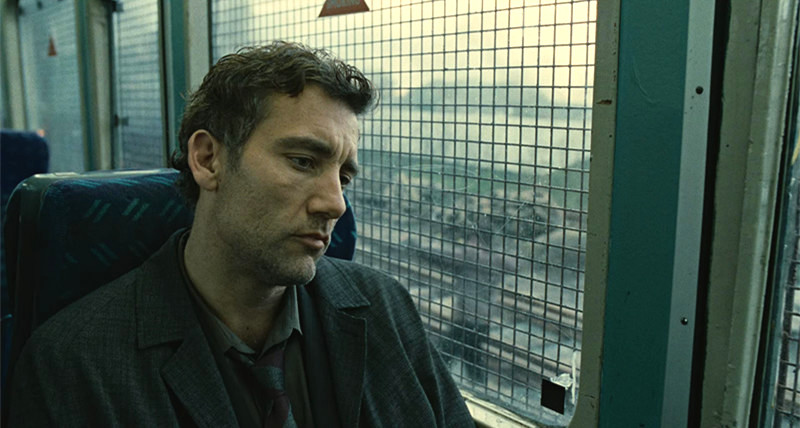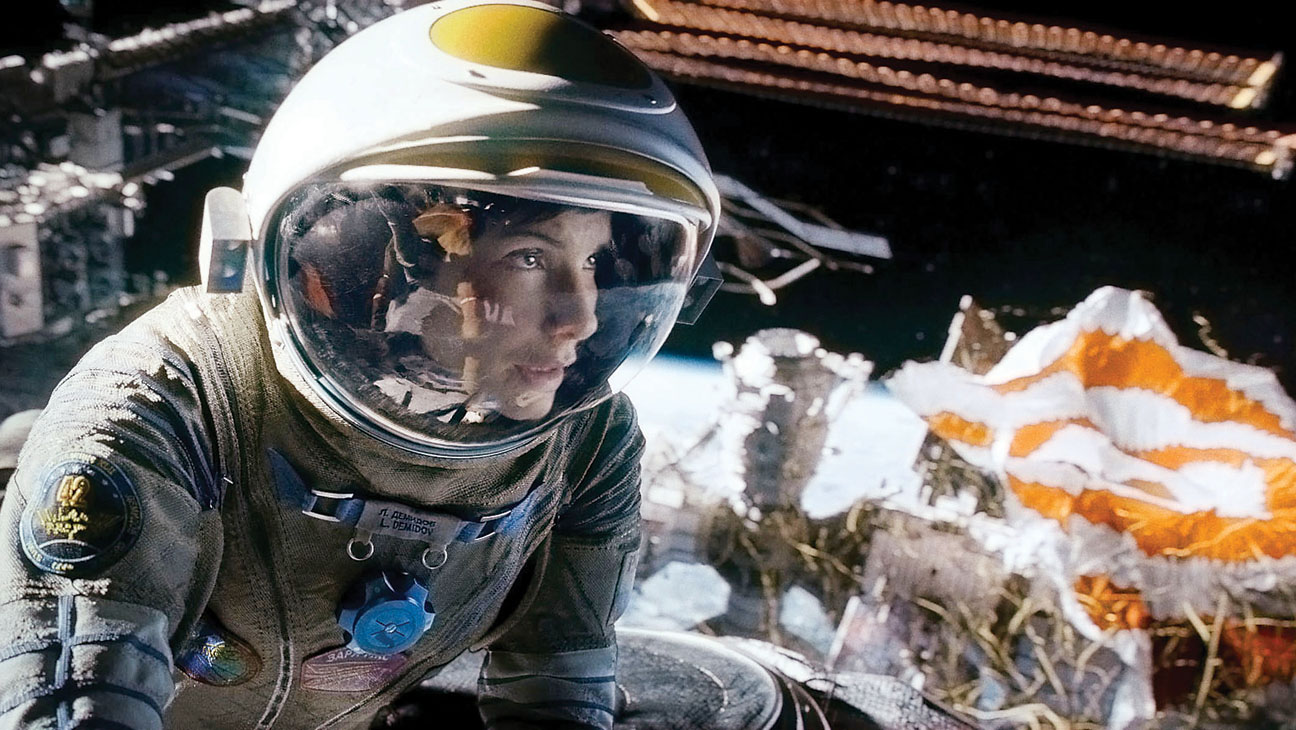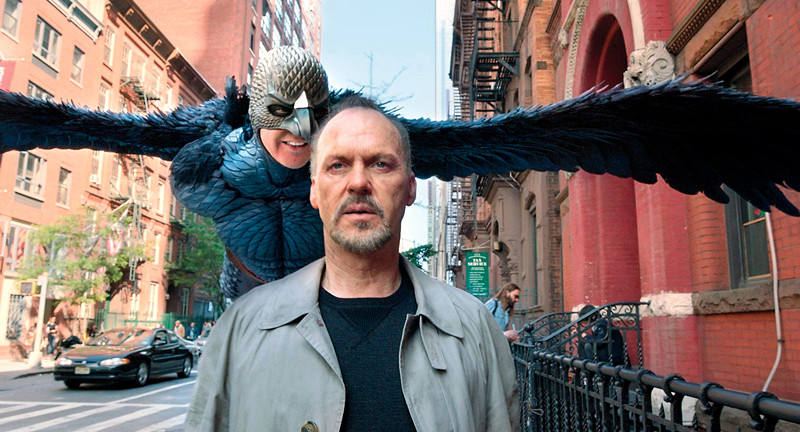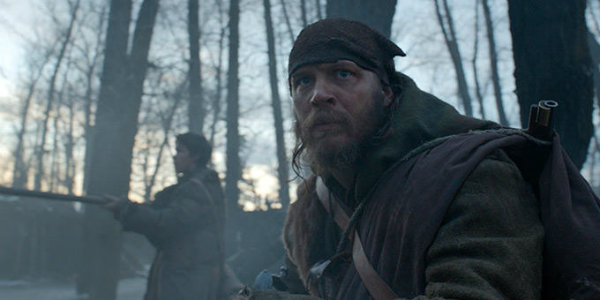5. Children of Men (2006)

I apologize for including so many of Cuarón’s films in this list. You must understand that it’s inevitable. The director has hired Lubezki to shoot most of his films. 2018’s Roma was actually the first time since 2004 that the two didn’t work together, and even still Cuarón wrote the script with “El Chivo” in mind. There’s a reason why their relationship has been so prolific though, and it’s that the work they do together is astounding, they seem to have found in each other someone that understands their artistic vision perfectly.
Children of Men is no exception. The 2006 film is one of the most interesting and original sci-fis of the past 20 years. It’s set in a world where human beings cannot reproduce anymore. It’s 2027, and the human race is in complete disarray and disheartenment. When a group called the Fishes discovers a young pregnant woman, a cynical bureaucrat named Theo (Clive Owen) finds himself with the future of humanity in his hands.
Lubezki made some of the best work of his career for this film. He perfectly captures the disillusionment and pessimism of the story’s world. He paints the film in dull greys, pale blues, and other cool colors that emphasize the animosity human beings have developed for each other in this childless world. There are two long-takes in the film that are easily among the most incredible camerawork Lubezki has ever done. A lot of time and creativity went into the creation of these sequences, it is rumored that it took 14 days to prepare for a single long-take of Clive Owen prowling a building during a battle. In one moment, blood spattered into the lens. Lubezki convinced the director to leave it in. They say making a film requires blood, sweat, and tears, and in Children of Men’s case, the evidence is right on the picture.
4. The Tree of Life (2011)

Malick’s The Tree of Life is a very unconventional film in many ways. There is no clear narrative, it is a collection of moments from the protagonist Jack’s life. They’re mostly from his childhood, focusing on his relationship with his parents. It’s a film that relies heavily on visuals to tell its story. It is full of some very interesting shots that are not only beautiful but help tell the story and tie it to the larger themes of nature, family, and good and evil.
If it looked any less astounding it would not be a good film. But Malick knew what he was doing. He hired Lubezki, who throughout his career has proven able to meet the highest of expectations. They shot the film in Texas in 2008 with as minimal a crew and equipment possible for a production of its caliber. For many shots and scenes, Lubezki worked only with natural light.
The Tree of Life went through long post-production before finally being released in 2011. It garnered loud critical praise and was nominated for several awards. Roger Ebert called it “a film of vast ambition and deep humility, attempting no less than to encompass all of existence and view it through the prism of a few infinitesimal lives” and said the only thing he’d seen before that compared was Kubrick’s 2001: A Space Odyssey.
“What I love about what Chivo does is that he can put a 14mm lens 18-inches from someone’s face and it seemingly works out because he respects the person in front of the lens. It’s about intention,” -Braford Young
3. Gravity (2013)

This is the final Cuarón film I’m including, I promise. If we’re talking about Lubezki’s most important projects of his career, it definitely deserves a spot. Gravity was revolutionary in several ways. It was at the time one of the most “realistic” sci-fis ever made. Of course, it has been proven to not be as realistic as it seems, but the point is it seems so, and it’s thanks to the incredible work put into it by all departments involved in its making.
It’s the story of two astronauts, played by Sandra Bullock and George Clooney. They’re aboard the Explore shuttle doing repairs on the Hubble Space Telescope when they are hit by debris. Bullock’s character then has to fend for herself in space and try to get to the International Space Station. It’s an intense and claustrophobic film; Cuarón’s pacing, a good performance by Bullock, its incredible effects, and Lubezki’s photography all click.
The average shot in the film is around 40 seconds long. Gravity is full of tracking shots that were very hard to execute. Lubezki mentioned that the look of the film was inspired by astronauts’ descriptions of space. He wanted the film to not look as two-dimensional so he augmented the look of the stars. Among the many great moments in the film, the uninterrupted 13 minute-long opening scene is one of the coolest things Lubezki and Cuarón ever did. They both ended up winning the first Oscars of their careers.
2. Birdman (2014)

Alejandro González Iñárritu is known in Hollywood as the third of the “Three Amigos”, three Mexican directors who made it big in Hollywood at around the same time. Cuarón is also part of the group, and so is Guillermo del Toro. Iñárritu was the last of the three to rise to prominence but has since matched them in renown. He started off his directing career with the sensational Amores Perros in 2000. Fourteen years later, he made one of the most visually innovative films of the century.
Birdman (or The Unexpected Virtue of Ignorance) is the story of Riggan Thompson (Michael Keaton), a washed-up actor once known for playing the superhero Birdman and now trying to make it in theater and maintain his sanity. The film was made to look like it was shot in a single continuous take. Iñárritu teamed up with El Chivo for the first time to do so. The planning of the film was a long and arduous process. Every single moment had to be precise for the rhythm to work, and it took the crew several months of making blueprints and going through rehearsals to achieve it.
Lubezki has mentioned that lighting the scenes was extremely difficult due to the fact that it not only had to look realistic but “also had to be designed so that the continuous movements of the camera did not project the crew’s shadows onto the actors” (Wikipedia). The shooting involved a lot of steady cam and handheld camerawork, which Lubezki did himself with an Alexa M camera. It all ended up coming together of course. The film won four Oscars: for Best Picture, for Best Director, for Screenplay, and for Cinematography, Lubezki’s second in a row. It deserves the praise it got and continues to get, it was truly like nothing ever done before and it proves that the skill and perseverance to make films doesn’t come easily.
1. The Revenant (2015)

Lubezki ended up capping his three-year Oscar run with another collaboration with Iñárritu. The film had been in development for 13 years until Iñárritu picked up the project in 2011. The story follows Hugh Glass, a frontiersman in the 19th Century who gets left for dead by his company after being attacked by a bear.
This film is known for being the one that finally gave Leo DiCaprio an Oscar. It was honestly well deserved, his performance is incredibly intense and raw. So is the style of the film. It was shot on location all over the world, in places like Europe, Montana, and Argentina. Lubezki’s cinematography relies heavily on natural light. Similar to Birdman, the film was very carefully choreographed to have the least shots possible. The camera often has a short focus distance, conveying a feeling of intimacy and urgency.
Production was apparently very tough, with many crew members quitting. Leonardo DiCaprio considers it the hardest shoot he’s ever done. The Oscar Lubezki ended up getting for it was well-deserved. He deftly captures the character’s emotions and the environment around them. Few films have the distinctive look and feel that The Revenant has and it is final supporting evidence for considering Emmanuel Lubezki one of the greatest cinematographers Hollywood has ever seen.